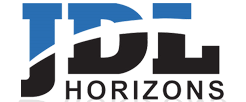 The New Media Consortium (NMC), the Consortium for School Networking (CoSN), and the International Society for Technology in Education have released the NMC Horizon Report > 2012 K-12 Edition and are releasing the accompanying CoSN Horizon Report: 2012 K-12 Edition Toolkit in a special session at the ISTE 2012 Conference.
The New Media Consortium (NMC), the Consortium for School Networking (CoSN), and the International Society for Technology in Education have released the NMC Horizon Report > 2012 K-12 Edition and are releasing the accompanying CoSN Horizon Report: 2012 K-12 Edition Toolkit in a special session at the ISTE 2012 Conference.
The annual K-12-focused research project generates considerable interest every year when it is released and has built a global following. At the ISTE conference this year in San Diego, the three principal investigators behind the report — NMC CEO Larry Johnson, CoSN CEO Keith R. Krueger, and ISTE Deputy CEO Leslie Conery — are discussing the Report, the Toolkit, and their impact in a landmark session.
There are four components to the CoSN Horizon Report: 2012 K-12 Edition Toolkit:
- Presentation Template – a PowerPoint overview of the Report, with the Notes View providing a suggested script for use in group discussions
- Discussion Facilitator’s Guide – providing guiding questions to pose to school district or education institution stakeholders to stimulate group thinking about the Report and new technologies.
- Discussion Activities – designed to engage stakeholders in dialogue to identify local instructional challenges, consider emerging technologies as solutions, and develop action plans.
- Video Clips – produced by JDL Horizons, developers of EduVision, an overview and six video shorts of the Report’s emerging technologies presented in a news story format that
 describe classroom application of the technologies and include insights from practitioners and students.
describe classroom application of the technologies and include insights from practitioners and students.
JDL interviewed administrators, teachers and students in leading-edge school districts who are using technology to enhance learning outcomes.
We are excited to introduce, in this year’s CoSN Horizon Report: 2012 K-12 Edition Toolkit, a video series that showcases educators, students, and top strategists and trendsetters in the education field who are enhancing education outcomes through the use of the emerging technologies highlighted in the Report. This introduction video provides a quick overview of what you’ll see.
Natural user interfaces allow computers to respond to gestures, motions of the body, facial expressions, voice, sound, and other environmental cues, and are replacing the keyboard and mouse as the standard for computer/human interaction.
While augmented reality is much simpler to create and use now than ever before, it is still several years away from widespread adoption in schools, although for informal education, it is already commonplace.
Teachers set expectations and outcomes to ensure students meet all education requirements, while students determine their own design for how they achieve and often exceed expectations. It’s no surprise that underlying these innovative strategies are enabling technologies, especially cloud computing and mobile devices and apps.
Games can be incorporated into every type of learning and can be both digital and non-digital. See how games are being used to transform student engagement and performance and how they provide real-time achievement and assessment information to both educators and students.
Tablets present new and exciting opportunities to enhance learning experiences in ways that are simply not possible with mobile phones, laptops, or desktop computers.
Enterprising educators are using tablets to achieve results that have them amazed.


 describe classroom application of the technologies and include insights from practitioners and students.
describe classroom application of the technologies and include insights from practitioners and students.